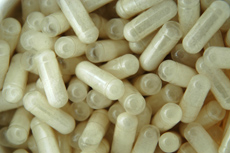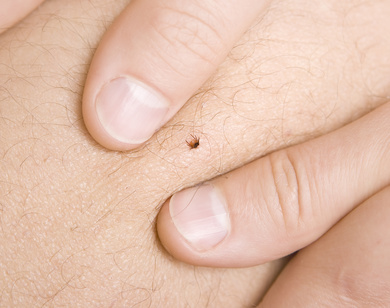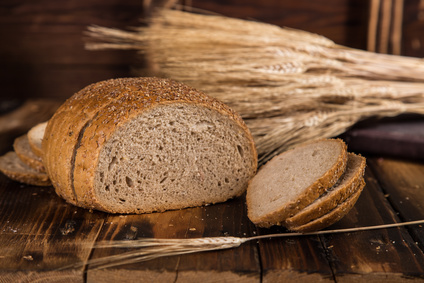Recipe: Curried Pumpkin Soup
This is a wonderful fall soup, this soup is creamy yet light - a perfect choice for a holiday party or dinner.
Ingredients
- 3 cups of fresh pumpkin, peeled, seeded and cubed (small cooking pumpkins at Trader Joe’s)
- 1 cup of organic yellow onions chopped
- 1 clove of organic garlic
- 1 Tablespoon of curry powder
- 1.5 tsp of sea salt
- 1 quart of organic vegetable broth
- 1 can of organic coconut milk
- 2 Tablespoons of Organic Ghee or olive or coconut oil
Cooking Instructions
- In a 4 quart saucepan, heat the oil and sauté the onions, garlic and pumpkin until they sweat but do not brown.
- Add curry powder, sea salt and vegetable broth.
- Cover and cook on medium low for about 20 minutes until the vegetables are soft.
- Turn off heat and add coconut milk.
- Using a hand blender, blend to desired consistency or cool and transfer to a blender and blend for 30 seconds.
Happy Thanksgiving!
Enjoy
Probiotics
There are over 400 species and thousands of strains of bacteria that are supposed to inhabit the lower intestines and colon.
These 400+ species are collectively called probiotics, which means "for life", and were initially discovered in the early 1900's. These bacteria have many roles in good health such as making short-chain fatty acids (SCFAs), polyamines, vitamins, antioxidants, and amino acids. Another function, especially in the case of Lactobacillus species, is to prevent food from decaying, preserve antioxidants and vitamins, remove toxins, and keep pathogenic organisms at bay. A third and major role of probiotics is to maintain proper immune function. Among the various effects on the immune system, a specific action is to stimulate the action of white blood cells like the macrophages, natural killer cells, monocytes, and neutrophils.
When buying a probiotic (see Natural Pharmacy), you want a multi-strain product called "broad spectrum". It should have at least 8 different types of probiotic bacteria. Avoid supplements with fillers or preservatives. The probiotic formula should be designed to by-pass the stomach and deliver essential bacteria to the lower intestines. Extended periods of elevated temperatures will diminish the viability of the organisms. Therefore, probiotics should be kept refrigerated and used immediately.
References
Jeanne A. Drisko, MD, CNS; Cheryl K. Giles, MD; Bette J. Bischoff, RD. (2003). Probiotics in Health Maintenance and Disease Prevention. Alternative Medicine Review. Volume 8, Number 2.
John A. Catanzaro, N.D. and Lisa Green, B.Sc. (1997). Microbial Ecology and Probiotics in Human Medicine (Part II). Alternative Medicine Review. Volume 2, Number 4.
Yehuda Ringel, Eamonn MM Quigley and Henry C Lin. (2012). Using Probiotics in Gastrointestinal Disorders. The American Journal of Gastroenterology Supplements 1, 34-40.
What is Making Us Fat?
Fat is really not a bad thing unless it is a cause of inflammation and chronic disease.
Fat is a source of energy and it is the backbone for making cells and signaling chemicals called hormones. Here is a shocking statistic: one out of three men and women in the United States are considered overweight. And alarmingly, 17% of children between 2 and 19 years are obese. Every year thousands of people resolve to lose weight, to shed those excess pounds that creep up year by year. Medical experts report that diet and exercise are the key to weight loss. We are bombarded by commercials and programming that suggest diet and exercise are the solution. We buy carefully selected menus and enlist in fitness clubs and programs. Some are successful yet most people shed a few pounds only to rebound to past levels and beyond. The results are miserable and very few people lose weight permanently. People blame themselves for poor lifestyle choices. It is predominant “medical wisdom” that suggests changing behaviors will lead to permanent weight loss.
With a seemly unlimited number of diets and exercise programs, why are the results so poor? “Convincing evidence suggests that diet and activity level are not the only factors in this trend – chemical “obesogens” may alter human metabolism and predispose some people to gain weight.”(1)
Obesogen is a new medical term that combines the two words obesity and estrogen (a hormone in both men and predominately women). Hormones produced naturally in the body are chemical signals that help different systems communicate with each other. Hormones attach to cell receptors like a “lock and key” mechanism that turns on or turns off gene expression. For example, the brain makes a chemical called thyroid stimulating hormone (TSH) that stimulates the thyroid gland to make another chemical thyroxine (T4) that circulates to the liver and kidneys where it is converted to triiodothyronine (T3). T3 is the activated thyroid hormone that stimulates cells in the digestive system, the urinary system, the brain, and other systems to make energy and do work. All along the pathway, each thyroid hormone stimulates a cell receptor causing the cell to do something. Hence, obesogens are chemicals that act like cellular signaling hormones that influence weight gain and the inability to lose fat.
The understanding of how obesogens affect cells is still being worked out by scientists and physiologists. The best information so far is based on research concerning tin biocides (“toxic to life”). In this research, it was found that these tin-based chemicals stimulated cells by activating a very specific cell receptor, the peroxisome proliferator-activated receptor (PPAR-gamma). (2) Adipose cells are storage depots for fat, a source of energy when food is scarce. In the beginning, when new cells are growing and haven’t quite determined what type of cell they should be, activating the PPAR-gamma receptor of the cell will cause it to become an adipose cell. When an existing adipose cell has its PPAR-gamma receptor stimulated the cell adds more fat into storage. This mechanism strongly suggests that the environment affects fat metabolism. In a mouse study the researchers gave low doses of perfluorooctanoic acid (PFOA, found in Teflon, Scotchguard, and Gore-Tex) to a group of mice in the same diet of their brothers and sisters who did not receive PFOA. The mice whose diet contained PFOA became morbidly obese. (3)
Obesogens are ubiquitous. They are in our food and water; they are in the air we breathe. Developing children and adolescents are considered more susceptible than adults, but this could be because children born today have a higher total load than their parents and grandparents .(4)
Here are some known and suspected chemicals that are obesogens: (1)
Diet
- Fructose
- Genistein
- Monosodium Glutamate
Smoking
- Nicotine
Pharmaceuticals
- Diethylstilbestrol
- Estradiol
Industrial Chemicals
- Bisphenol A (BPA)
- Organotins
- Perfluorooctanoic Acid (PFOA)
- Phthalates
- Polybrominated Diphenyl Ethers (PBDEs)
- Polychlorinated Biphenyl Ethers (PCBs)
Organophosphate Pesticides
- Chlopyrifos
- Diazinon
- Parathion
Other Environmental Pollutants
- Benzo[a]pyrene
- Fine Particulate Matter (PM2.5)
- Lead
Some of these chemicals like plastics and pesticides are pervasive in our environment. No one can escape them. It is best to minimize exposure by eating organic fresh prepared foods. Avoid cooking with Teflon. Avoid cans lined with plastic as well as plastic food containers. Drink water that has been filtered through a high-quality industrial filter. Avoidance is critical.
Experts agree that all people are carrying a body burden of a majority of these chemicals. While it is very difficult to accurately measure the body burden of these chemicals there is good clinical evidence that supporting and enhancing fat and detoxification metabolism to eliminate these chemicals will result in permanent weight loss.
For information about our Weight Loss and Diabetes Program see: https://sciencemeetsnature.org/services/programs/
Bibliography and Footnotes
- Holtcamp, W. Obesogens: An Environmental Link to Obesity. EHP 120:2 Feb 2012 A63 – A68.
- Evans RM, et al. PPARs and the complex journey to obesity. Nat Med 10(4):355-361 (2004).
- Hines E., et al. Phenotypic dichotomy following developmental exposure to perfluorooctanoic acid (PFOA) in female CD-1 mice: Low doses induce elevated serum leptin and insulin, and overweight in mid-life. Molecular and Cellular Endocrinology 304 (2009) 97 – 105.
- Environmental Working Group. Body Burden: The Pollution in People. http://www.ewg.org/sites/bodyburden1.
See also, Across Generations: Industrial chemicals in mothers and daughters: The Pollution we share and inherit. http://www.ewg.org/reports/generations.
Immune System Health
Intestinal Barrier: Gateway to immune system
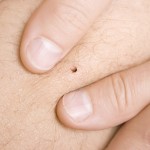
The most obvious barrier is the skin. Seven layers of epithelial cells stacked and closely knit together by proteins called keratins. The lining of the intestinal tract has a barrier. The lungs have a barrier. And just in case something gets through these three gateways, there is a blood-brain barrier.
The gut barrier is one of the three functions of digestion. As an analogy, if you thrust your fist into a balloon, the outside skin becomes the inside skin. In between the inside skin and the outside skin is air. The air represents your body. Accordingly, when you ingest something it is technically not in your body until it crosses the barrier.
The gut barrier is composed of a thin lining of mucous over a single layer of epithelial cells, the same cells that comprise the skin. Between each cell is a zipper-like protein that is called the tight junction. When the tight junction is broken, the gut barrier is compromised. This condition is referred to as intestinal permeability or sometimes “leaky gut”.
It is estimated that seventy percent of the immune system is located in the gut. There is a constant, enormity of activity from destroying and eliminating bacteria, fungus, and viruses. Undigested proteins from foods are recognized as viral proteins and treated as such by the gut immune system. The gut environment is a fine balance of inflammation and repair. Sometimes the influences overwhelm the immune defenses or the immune system overreacts, creating a chronic inflammatory environment. The overburdened immune system cannot prevent damage to the intestinal lining, an important barrier to the body and vital organs. Once past the gut barrier, the body or somatic immune system reacts vigilantly to the same bacteria, viruses, fungi, man-made and natural toxins. Bear in mind that the immune system is finite so without the gut barrier the somatic immune system can be easily overwhelmed. When the immune system cannot keep up with the chronic invasion, symptoms begin to develop. A compromised gut barrier is the very beginning of many symptoms, syndromes, and diseases.
Immune System and Autoimmune Disease
Intestinal permeability is correlated with autoimmune diseases, headaches, insomnia, lyme disease, and psychological conditions including anxiety, depression, neurosis, and schizophrenia.
In its 2005 Report on Progress in Autoimmune Diseases Research the research committee stated “while many diseases (autoimmune) are rare, collectively they affect 14.0 to 23.5 million people in this country.” To put this into context, cancer affects about 12 million people and heart disease affects approximately 18 million people. Yet autoimmune diseases are more prevalent than cardiovascular diseases and cancer combined. In a 2011 study, the National Institute of Environmental Health Sciences estimates that “more than 32 million people in the United States have autoantibodies”. The 2005 report goes on to say “More than 80 human diseases are due at least in part to an inappropriate immune system response that results in damage to an individual’s organs, tissues, or cells. Autoimmune diseases can affect any part of the body, and have myriad clinical manifestations that can be difficult to diagnose. At the same time, autoimmune diseases share many features related to their onset and progression. In addition, overlapping genetic traits enhance susceptibility to many of the diseases, so that a patient may suffer from more than one autoimmune disorder, or multiple autoimmune diseases may occur in the same family.”
Some of the more common named autoimmune diseases are Psoriasis, Rheumatoid Arthritis, Hashimoto’s Thyroiditis, Hepatitis, Sjogren’s Syndrome, Lupus, and Multiple Sclerosis. At the core of these diseases is a hypervigilant immune system that attacks its own tissue because the tissue resembles a virus or other protein with which the immune system had an experience. This is called molecular mimicry and is an important understanding of the cause of autoimmune diseases. It is the undigested proteins, viruses, bacteria, fungus and other environmental influences that pass through the compromised gut barrier and are attacked by the somatic immune system. The somatic immune system is on guard against any cell that even looks like the trespasser, including one’s own tissue and cells.
Lyme Disease and Intestinal Permeability
In a condition of intestinal permeability the somatic immune system is overwhelmed and can barely keep up with the onslaught of influences, especially when it is confronted with the stealth bacteria Borrelia burgdorferi, the bacteria implicated with Lyme disease. Lyme disease is the symptom picture associated with an overwhelmed immune system combined with an unidentified autoimmune disease. Many of the psychological conditions, as well as insomnia, are part of chronic Lyme disease. Despite a multitude of physical and psychological symptoms, Lyme disease is the manifestation of leaky gut.
Once it is recognized, intestinal permeability can be repaired. First, remove the source of chronic inflammation. Then nourish the epithelial cells so they may replicate and develop new tight junctions. Once the gut barrier is restored, the somatic immune system will rebalance itself and hyperactivity will subside.
References
http://www.agingsociety.org/agingsociety/pdf/heart.pdf
http://www.cancer.org/Cancer/CancerBasics/cancer-prevalence
Progress in Autoimmune Disease Research, National Institutes of Health The Autoimmune Diseases Coordinating Committee, Report to Congress, March 2005.
Turner J. Intestinal mucosal barrier function in health and disease. Nature Reviews/Immunology 9: 799-809, 2009.
Fasano, A. Zonulin and Its Regulation of Intestinal Barrier Function: The Biological Door to Inflammation, Autoimmunity, and Cancer. Physiol Rev 91:151-175, 2011.
Fasano, A. Mechanisms of Disease: the role of intestinal barrier function in the pathogenesis of gastrointestinal autoimmune diseases. Gastroenterology & Hepatology 2; 416-422, 2005.
Oldstone, M. Molecular mimicry and immune-mediated disease. FASEB J. 12, 1255-1265. 1998.
Satoh M et al. Prevalence and sociodemographic correlates of antinuclear antibodies in the United States. Arthritis and Rheumatism. doi:10.1002/art.34380
Family and Environmental Medicine help patients with Natural and Holistic Treatments for a healthy immune system. Dr Gary Gruber provides private appointments for patients from around the country who seek health and healing with Complementary and Alternative Medicine. The majority of patients are from the local area including Greenwich CT, Stamford CT, Darien CT, Norwalk CT, New Canaan CT, Wilton CT, Westchester County, NY, NYC, and Northern NJ.
Fat, Weight Loss and "Hormones"
Fat is Necessary
Fat is really not a bad thing unless it is a cause of inflammation and chronic disease. Fat is a source of energy and it is the backbone for making cells and signaling chemicals called hormones.
Here is a shocking statistic: one out of three men and women in the United States are considered overweight. And alarmingly, 17% of children between 2 and 19 years are obese. Every year thousands of people resolve to lose weight, to shed those excess pounds that creep up year by year. Medical experts report that diet and exercise are the key to weight and fat loss. We are bombarded by commercials and programming that suggest diet and exercise are the solution to reducing fat. We buy carefully selected menus and enlist in fitness clubs and programs. Some are successful yet most people shed a few pounds only to rebound to past levels and beyond. The results are miserable and very few people lose weight permanently. People blame themselves for poor lifestyle choices. It is predominant “medical wisdom” that suggests changing behaviors will lead to permanent weight loss.
With a seemly unlimited number of diets and exercise programs, why are the results for weight and fat loss so poor? “Convincing evidence suggests that diet and activity level are not the only factors in this trend – chemical “obesogens” may alter human metabolism and predispose some people to gain weight.”(1)
Fat Cells are Stimulated by Obesogens
Obesogen is a new medical term that combines the two words obesity and estrogen (a hormone in both men and predominately women). Hormones produced naturally in the body are chemical signals that help different systems communicate with each other. Hormones attach to cell receptors like a “lock and key” mechanism that turns on or turns off gene expression. For example, the brain makes a chemical called thyroid stimulating hormone (TSH) that stimulates the thyroid gland to make another chemical thyroxine (T4) that circulates to the liver and kidneys where it is converted to triiodothyronine (T3). T3 is the activated thyroid hormone that stimulates cells in the digestive system, the urinary system, the brain, and other systems to make energy and do work. All along the pathway each thyroid hormone stimulates a cell receptor causing the cell to do something. Hence, obesogens are chemicals that act like cellular signaling hormones that influence weight gain and the inability to lose fat.
The understanding of how obesogens affect cells is still being worked out by scientists and physiologists. The best information so far is based on research concerning tin biocides (“toxic to life”). In this research it was found that these tin-based chemicals stimulated cells by activating a very specific cell receptor, the peroxisome proliferator-activated receptor (PPAR-gamma). (2) Adipose cells are storage depots for fat, a source of energy when food is scarce. In the beginning, when new cells are growing and haven’t quite determined what type of cell they should be, activating the PPAR-gamma receptor of the cell will cause it to become an adipose cell. When an existing adipose cell has its PPAR-gamma receptor stimulated the cell adds more fat into storage. This mechanism strongly suggests that the environment affects fat metabolism. In a mouse study the researchers gave low doses of perfluorooctanoic acid (PFOA, found in Teflon, Scotchguard, and Gore-Tex) to a group of mice in the same diet of their brothers and sisters who did not receive PFOA. The mice whose diet contained PFOA became morbidly obese. (3)
Obesogens are ubiquitous. They are in our food and water; they are in the air we breathe. Developing children and adolescents are considered more susceptible than adults, but this could be because children born today have a higher total load than their parents and grandparents. (4)
Here are some known and suspected chemicals that are obesogens: (1)
Diet
• Fructose • Genistein • Monosodium Glutamate
Smoking
• Nicotine
Pharmaceuticals
• Diethylstilbestrol • Estradiol
Industrial Chemicals
• Bisphenol A (BPA) • Organotins • Perfluorooctanoic Acid (PFOA) • Phthalates • Polybrominated Diphenyl Ethers (PBDEs) • Polychlorinated Biphenyl Ethers (PCBs)
Organophosphate Pesticides
• Chlopyrifos • Diazinon • Parathion
Other Environmental Pollutants
• Benzo[a]pyrene • Fine Particulate Matter (PM2.5) • Lead
Some of these chemicals like plastics and pesticides are pervasive in our environment. No one can escape them. It is best to minimize exposure by eating organic fresh prepared foods. Avoid cooking with Teflon. Avoid cans lined with plastic as well as plastic food containers. Drink water that has been filtered through a high quality industrial filter. Avoidance is critical.
Fat Metabolism
Experts agree that all people are carrying a body burden of a majority of these chemicals. While it is very difficult to accurately measure the body burden of these chemicals there is good clinical evidence that supporting and enhancing fat and detoxification metabolism to eliminate these chemicals will result in permanent weight loss.
Bibliography and Footnotes
- Holtcamp, W. Obesogens: An Environmental Link to Obesity. EHP 120:2 Feb 2012 A63 – A68.
- Evans RM, et al. PPARs and the complex journey to obesity. Nat Med 10(4):355-361 (2004).
- Hines E., et al. Phenotypic dichotomy following developmental exposure to perfluorooctanoic acid (PFOA) in female CD-1 mice: Low doses induce elevated serum leptin and insulin, and overweight in mid-life. Molecular and Cellular Endocrinology 304 (2009) 97 – 105.
- Environmental Working Group. Body Burden: The Pollution in People. http://www.ewg.org/sites/bodyburden1. See also, Across Generations: Industrial chemicals in mothers and daughters: The Pollution we share and inherit. http://www.ewg.org/reports/generations.
Family and Environmental Medicine help patients with Natural and Holistic Treatments for Weight Loss and Diet. Dr Gary Gruber provides private appointments for patients from around the country who seek health and healing with Complementary and Alternative Medicine. The majority of patients are from the local area including Greenwich CT, Stamford CT, Darien CT, Norwalk CT, New Canaan CT, Wilton CT, Westchester County, NY, NYC, and Northern NJ.
Gluten: A surprising environmental toxin
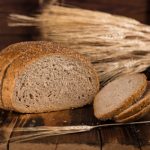
Gluten is the common name given to a composite of different proteins found in grains, referring predominately to gliadin and glutenin proteins found in wheat, barley, and rye. Gliadin is an alcohol soluble protein that is toxic to many people. There are two types of gluten intolerance, Celiac’s Disease and Gluten Sensitivity, both related to the body’s reaction to gliadin.
In Celiac’s disease the immune system makes antibodies to the gliadin protein. These same antibodies also attack other normal tissue within the intestines. The antibodies do their job and the immune system obliterates the absorptive surface of the small intestine, making survival very difficult. With gluten sensitivity, the immune system handles the gliadin protein as though it were a virus - generating a cascade of inflammation that acts as though there is an infection. Over time this chronic infection significantly reduces the digestive function by infiltrating the gut barrier and destroying cells responsible for producing digestive enzymes.
The early stage of gluten sensitivity is marked by inflammation and may result in gas, bloating, heartburn, constipation, and diarrhea. Many times over the counter preparations and prescriptions are given to mask these symptoms. As the inflammation progresses, nutritional deficiencies that result in fatigue, headaches, brain fog, anxiety, depression and insomnia are likely, along with other infections of the gut such as parasites, yeast, and h. pylori. In the final stages of inflammation, the digestive barrier is compromised along with poor digestion of macro and micro nutrients. In these later stages, signs and symptoms don’t change but the metabolic and immunological functions are increasingly compromised. The result is high susceptibility to autoimmune disease, heavy metal toxicity, hormone imbalance, and neurological disorders. Some of these diseases are Chronic fatigue syndrome, fibromyalgia, Hashimoto’s thyroiditis, diabetes, rheumatoid arthritis, multiple sclerosis, hepatitis, lupus, Parkinson’s disease, and autistic spectrum disorder. For some people this process of digestive deterioration follows a path of little to no signs or symptoms. This condition is referred to as “Silent Celiac’s.”
Both Celiac’s and gluten sensitivity are genetically manifested. The Celiac genes (HLA-DQ2 or 8) are found in 42% of the population. Similarly, the gluten sensitive genes (HLA-DQ1, 7, or 9) are found in 57% of the population. The potential for gene expression is very high, perhaps 99% of the population. Yet not all people who have these genes express them.
Clinically, we find that some event, infection, or environmental toxin triggers the expression of the gene. There is good evidence that gut microbiota (good bacteria) play a critical role by inhibiting the expression of the genes from Celiac’s disease or gluten sensitivity. It is important to understand that the use of any antibiotics increases susceptibility to Celiac’s disease and gluten sensitivity because antibiotics destroy the microbiota.
Interestingly, the health consequences of Celiac’s disease and gluten sensitivity are roughly the same, although damage to the digestive system occurs more quickly with Celiac’s. Since the late 1950s it has been estimated that 1 – 2% of the population suffer from Celiac’s disease. However, new evidence is suggesting that gluten intolerance is more widespread and having a major impact on the health of the U. S.
The gold standard for diagnosing Celiac’s disease or gluten enteropathy from gluten sensitivity is a biopsy of the small intestine. A small patch of intestinal tissue is examined under a microscope by a trained pathologist. A diagnosis is given when 100% of the intestinal villa is flattened or missing. This flattening occurs over time; if the biopsy is done too soon when such a flattening is not total, a false negative diagnosis is likely. Blood tests are available but the sensitivity of the test generally yields false negatives. More accurate saliva and stool tests that measure outright antigliadin antibodies are more sensitive and reliable than the blood test.
When we test patients for gut function, we find a strong correlation between elevated anti-gliadin antibodies and pancreatic deficiency. This clinical finding suggests that chronic inflammation from gluten-sensitivity may cause a decrease in enzyme production. Since these enzymes are produced in the tips of the intestinal villa, it suggests that the gluten sensitive inflammation may obliterate intestinal villi without causing intestinal permeability. Nevertheless, poor enzyme production translates into amino acid and fatty acid deficiencies, which in turn result in hormonal, neurological, and immunological dysfunction -ultimately leading to an outright disease.
New research is exposing the relationship between gluten sensitivity and xenobiotic metabolism. In one study, the ability to detoxify environmental chemicals was significantly lowered in an animal model with gluten sensitivity. Therefore, gluten sensitivity potentially inhibits a person’s ability to eliminate multiple cancer-causing agents.
There are many health problems associated with gluten sensitivity ranging from nutritional deficiencies to autoimmune disease to cancer. It is critical to know one’s gluten sensitivity, because future health depends on an intact and functional digestive system. Diagnosis using stool or saliva is simple and this information empowers one to change dietary habits and avoid gluten containing foods.
References
Divergence of gut permeability and mucosal immune gene expression in two gluten-associated conditions: celiac disease and gluten sensitivity. BMC Med. 2011 Mar 9 ;9:23.
Celiac disease: from gluten to autoimmunity. Autoimmun Rev. 2008 Sep ;7(8):644-50. Epub 2008 Jun 25 .
A deregulated immune response to gliadin causes a decreased villus height in DQ8 transgenic mice. Eur J Immunol. 2009 Dec ;39(12):3552-61.
Expression of microbiota, Toll-like receptors, and their regulators in the small intestinal mucosa in celiac disease. J Pediatr Gastroenterol Nutr. 2012 Jun ;54(6):727-32.
Improved xenobiotic metabolism and reduced susceptibility to cancer in gluten-sensitive macaques upon introduction of a gluten-free diet. PLoS One. 2011 Apr 12 ;6(4):e18648.
Family and Environmental Medicine help patients with Natural and Holistic Treatments for Gluten Sensitivity and Celiac's disease. Dr Gary Gruber provides private appointments for patients from around the country who seek health and healing with Complementary and Alternative Medicine. The majority of patients are from the local area including Greenwich CT, Stamford CT, Darien CT, Norwalk CT, New Canaan CT, Wilton CT, Westchester County, NY, NYC, and Northern NJ.


